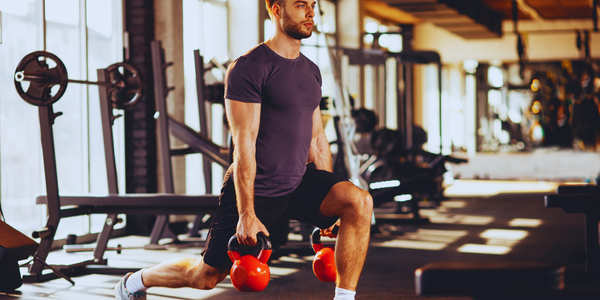The Best Exercises to Regain Balance After 60
Expert guide to the best balance exercises to regain stability and prevent falls after age 60.

About 1 in 4 older adults fall each year. This makes falls a big risk for them. Doing balance exercises can cut fall risks by up to 30% in older adults. This shows how key fall prevention and senior balance training are. You can boost your balance and lower fall risks by adding balance exercises to your daily routine. You can find these exercises on balance improvement websites.
Doing balance exercises regularly can make older adults more mobile and independent. This can lead to a better life quality. It's advised that older adults do balance exercises at least 3 times a week. This keeps them stable and coordinated. By adding balance exercises to your routine, you can lower your fall risk and boost your health.
https://www.youtube.com/watch?v=uJZk7jafw-o
When starting your balance exercise routine, begin slowly and increase the challenge as you get better. Always talk to a healthcare professional before starting any new exercise, even more so if you have health issues.
Key Takeaways
- Approximately 1 in 4 older adults experience a fall each year.
- Balance exercises can reduce the risk of falls by up to 30% in older adults.
- Regular balance training can lead to a 50% reduction in fall-related injuries among seniors.
- Older adults should perform balance exercises at least 3 times a week.
- Balance exercises can enhance overall mobility and independence in older adults.
- Incorporating balance exercises into your routine can improve your overall health and reduce your risk of falls.
- It's essential to consult with a healthcare professional before starting any new exercise program.
Understanding Balance Loss and Its Impact on Senior Health
As we get older, our bodies change in ways that can make it harder to balance. About 1 in 4 older adults fall each year. Falls are the top cause of injuries for those 65 and older. Balance training for older adults is key to preventing falls and injuries.
Chronic conditions like arthritis, Parkinson’s disease, or diabetes can make it tough to move and stay steady. This makes balance workouts for seniors very important. Some medicines can also make people dizzy or cause blood pressure drops, raising the risk of falls. Regular exercise, including balance training for older adults, can help fight off aging effects and lower fall risks.
Good ways to boost balance include standing on one leg, shifting weight, and doing bicep curls with balance moves.
Tai chi is also a great option. It's a gentle form of movement that can help improve balance and lower fall risks. The National Institute on Aging recommends four types of exercise for older adults. These include balance exercises to prevent falls in the elderly. By adding these exercises to their routine, older adults can stay safe and independent.
Safety Guidelines and Balance Assessment for Seniors
As we get older, our balance can change. This is due to muscle loss, weakness, and changes in the vestibular system. Doing balance improvement exercises and exercises to improve balance in seniors can lower fall risks. It's key to check your balance and take safety steps before starting balance exercises.
To make your exercise space safe, follow these tips:
- Remove tripping hazards, such as loose rugs and clutter
- Improve lighting in your home, specially in exercise areas
- Wear proper footwear, with good support and rubber soles
Regular physical activity, like senior fall prevention exercises, can boost balance and fall risk. Always talk to a healthcare provider before starting any new exercise, even more so if you have health issues.
Senior Balance Training: Essential Exercises for Stability
Balance exercises are key for older adults to avoid falls. Doing balance exercises regularly can lower fall injury risks. It's best to do these exercises three to five times a week.
Important exercises for senior balance training include standing, walking, and strength training. Chair-based exercises and progressive challenges are also helpful. These activities boost balance and cut down fall risks, a major cause of injury and death in adults over 65.
To start with elderly balance exercises, try these:
- Single-leg balancing exercises: Hold for up to 30 seconds on each leg, repeated five times.
- Heel-toe walking: Take 10-20 steps, focusing on placing the heel of the front foot directly in front of the toe of the back foot.
- Leg raises: Perform 10-15 times on each leg, with a focus on maintaining knee flexibility.
Always talk to a healthcare provider before starting any new exercise, even if you're healthy. With regular practice and patience, you can enhance your balance and lower fall risks. This is vital for fall prevention and good health.
Conclusion: Building a Sustainable Balance Exercise Routine
Starting a balance exercise routine is key for seniors to avoid falls. Studies show that balance and strength exercises can lower fall risks. Since about 25% of older adults fall each year, it's vital to add balance training to your life.
First, talk to a healthcare provider to find what's best for you. You can also check out websites that offer tips on balance. By sticking to a balance workout plan, you can greatly reduce fall risks and boost your health.
Preventing falls in the elderly means more than just balance training. It also includes strength exercises and making lifestyle changes. By being proactive and adding balance workouts to your daily routine, you can stay independent and live a healthier, more active life.
FAQ
What are the benefits of balance exercises for seniors?
Balance exercises help seniors stay steady and lower fall risks. They also boost fitness, confidence, and independence.
How can I assess my balance and identify potential problems?
Try simple tests like standing on one foot or walking heel-to-toe. If you feel dizzy or stumble, you might have a balance issue. Talk to a doctor for a full check-up.
What safety precautions should I take when starting a balance exercise routine?
Always talk to a doctor before starting, if you have health issues. Make your home safer, use tools, and exercise with someone nearby.
What types of exercises are best for senior balance training?
Good exercises include standing, walking, strength training, and chair exercises. They improve balance and reduce fall risks.
How can I modify exercises to suit my fitness level and progress to more challenging exercises?
Start simple and get harder as you get better. Use chairs first, then try standing. Listen to your body and get advice from experts.
What is the importance of consulting with a healthcare provider before starting a new exercise routine?
A doctor's advice is key for seniors. They check your health, suggest safe exercises, and guide you. This ensures a safe and effective routine.
How can I stay motivated and build a sustainable balance exercise routine?
Set goals, track your progress, and exercise with friends. Choose fun exercises that fit your life. Reward yourself for your efforts. Building a routine takes time and patience.
What are some common balance exercises for seniors to improve balance and prevent falls?
Try standing on one foot, walking heel-to-toe, and strength exercises like leg lifts. These improve balance and reduce fall risks.
How can I create a safe exercise environment to reduce the risk of falls and injuries?
Remove hazards, improve lighting, and use tools like handrails. Exercise with a partner and have a fall plan, like keeping a phone nearby.
👉 Join the Active Man Community
Get expert tips, workout guides, nutrition hacks, and the latest trends delivered straight to your inbox every week. No spam — just actionable insights to help you live stronger, healthier, and better.





